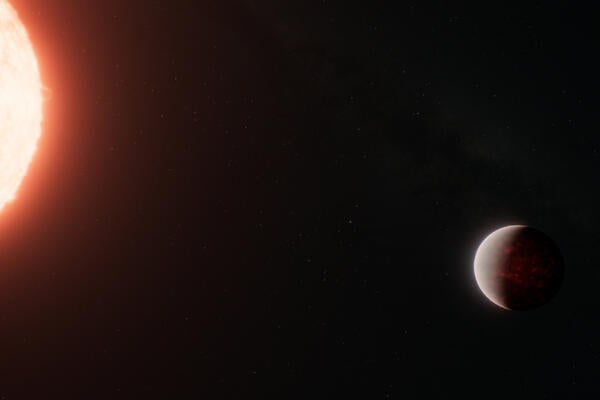
Q and A with the experts: Parade of Planets
Waterloo’s astrophysicist answers questions about the astronomical rarity

Waterloo’s astrophysicist answers questions about the astronomical rarity
By Media RelationsIn early June 2024, people in some parts of the world will be able to see as many as six planets lined up in the sky, an astronomical rarity. Dr. Roan Haggar, a postdoctoral fellow in the University of Waterloo's Centre for Astrophysics, tells us about the phenomenon.
What is the Parade of Planets?
The planets all orbit around our sun, which takes months for some of them and decades for others. As they orbit the sun, they appear to move around in the sky from night to night. For the first week of June, Jupiter, Mars, Mercury, Neptune, Saturn, and Uranus will all appear in the same part of the night sky just before dawn.
What causes planetary alignment and makes it visible from Earth?
All the planets in our Solar System orbit around the sun in a flat disk shape. From Earth, this looks like a straight line – kind of like how a dinner plate looks like a line when you view it edge-on. Most of the time, these planets are all in different directions from the Earth, so we can only see a few of them at once. Occasionally, though, several of them happen to be on the same side of the sun at the same time, meaning that from here on Earth, they all appear to be in the same direction.
How often do planetary parades of five or more happen?
Planetary parades of a few planets happen quite often, but seeing more than five planets in parade isn’t as common. Something to look forward to: in February 2025, all seven planets will be visible at once creating a full planetary parade.
How can people view the Parade of Planets?
This parade will be visible every day for about a week at the start of June, although the best day for viewing will be June 3. Neptune, Mars and Saturn will be visible in the east for a few hours before sunrise, but Jupiter, Mercury and Uranus will only rise about 30 minutes before the sun, so they might be hard to spot. You'll need a telescope or a good pair of binoculars to see Neptune and Uranus, but the others will be visible if you're somewhere with dark, clear skies.

Read more
Here are the people and events behind some of this year’s most compelling Waterloo stories

Read more
Discovery of a thick atmosphere on a lava world reshapes our understanding of rocky exoplanets

Dr. Brian Dixon, professor of biology at the University of Waterloo says there is a link between cold weather and getting sick. (University of Waterloo)
Read more
Waterloo researcher shares why we get sick when the mercury dips
The University of Waterloo acknowledges that much of our work takes place on the traditional territory of the Neutral, Anishinaabeg, and Haudenosaunee peoples. Our main campus is situated on the Haldimand Tract, the land granted to the Six Nations that includes six miles on each side of the Grand River. Our active work toward reconciliation takes place across our campuses through research, learning, teaching, and community building, and is co-ordinated within the Office of Indigenous Relations.